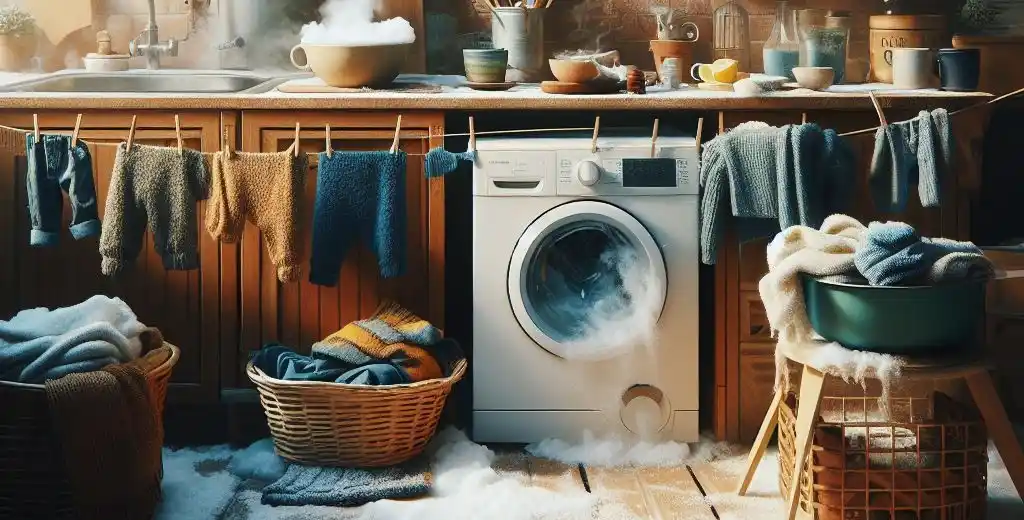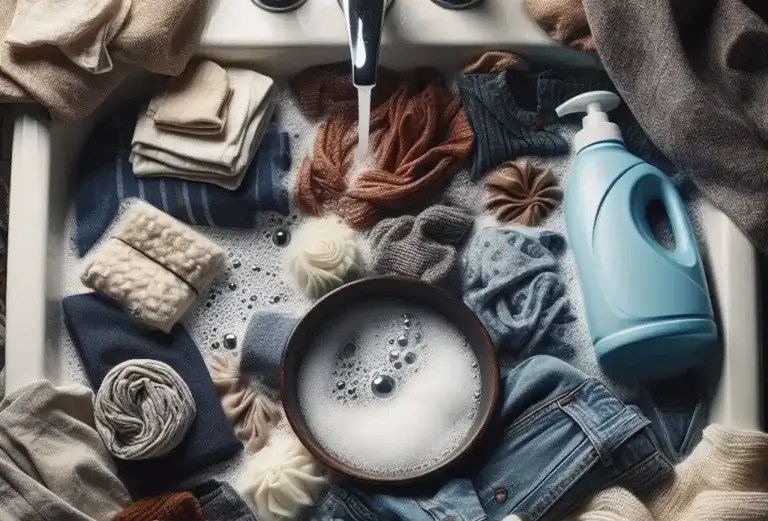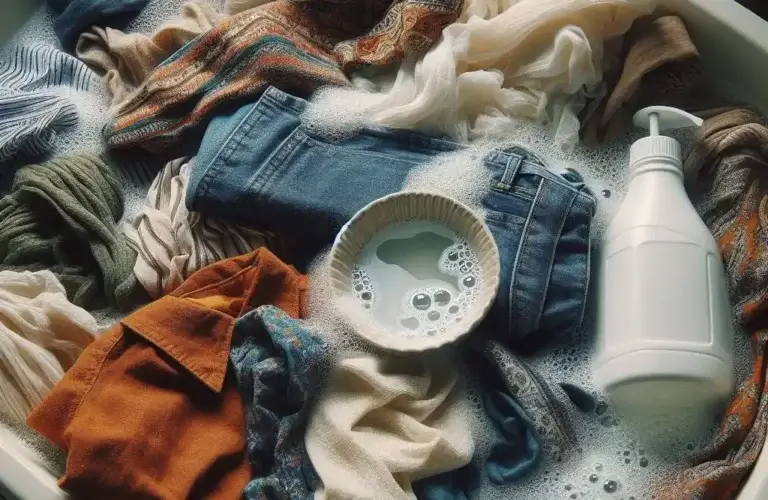Tap Cold vs Cold Which is Better: Which Water Temperature is Best for Washing Clothes?
Are you confused about whether using Cold tap water is not just a choice but a necessity for some delicate clothes? tap or cold setting on your washing machine? Getting your laundry clean while being gentle on clothes can seem complicated. Should you use cold water or add some warmth? Will cold water even get your clothes clean?
This article will examine Tap Cold vs Cold Which is Better and will break down the differences between tap cold and plain cold Water for washing clothes. Through Cleantok, you’ll learn about the pros and cons of washing with various water temperatures so you can decide what’s best for your laundry.
What’s the Difference Between Tap Cold and Cold Water?
When you turn the knob on your washing machine to “cold,” you get plain cold water directly from your home’s water supply. This water hasn’t been warmed at all. The cold setting gives you water at about 50-54°F (10-12°C).
On the other hand, “tap cold” water comes from your household water heater. Even though you aren’t actively heating the water, tapping into the heater supply means the water is often warmer than plain cold. Tap cold temperatures range from 60-80°F (15-26°C).
So tap cold gives you cool rather than outright cold water. But it still avoids actively heating the water as the warm or hot settings do.
Is it Better to Wash Clothes in Cold or Warm Water?

Here is a summary comparing the benefits of washing clothes in cold vs warm water:
Cold Water
Pros:
- Uses less energy – saves on electricity bills and is better for the environment
- Helps fabrics retain color and avoid fading
- Gentler on clothes – prevents shrinkage of delicate items
- Fabrics last longer without heat damage
- Still sanitizes laundry effectively with detergents
Cons:
- Takes longer for detergent to dissolve and activate
- Less effective on heavy stains and grease
- May need to pretreat some protein stains
Warm Water
Pros:
- Dissolves and lifts stains faster
- Better for oily, greasy stains
- Can be more effective on protein stains
- Softens some fabrics like towels
- Fastest wash cycles
Cons:
- Uses the most energy of standard cycles
- Can cause the fading of bright colors
- Risks shrinkage, especially for delicates
- Repeated heat damage shortens fabric lifespan
Overall, washing most everyday loads in cold water is best to save energy, and money, and prevent wear on clothes. But occasional warm washes help remove stubborn stains better when needed.
The Benefits of Washing in Cold Water

Washing your clothes with cold water has some excellent advantages:
- Saves energy: Heating water accounts for 90% of the energy your washer uses. Opting for the laundry hack of skipping heat cuts electricity costs and reduces your home’s carbon footprint.
- Prevents fading: Hot water can degrade dyes and cause fade damage. Washing clothes in cold water can help keep colors vibrant for longer periods.
- Avoids shrinkage: Heat makes fabric fibers contract. Delicates and woven items often shrink when washed in hot.
- Lengthens fabric life: Heat breaks down elastic and worn fabrics over time. The cold cycle is gentler on all cloth types.
- Kills germs: Contrary to popular belief, cold tap water washes still sanitize your laundry. Combining lower temperatures with detergent when washing clothes in cold water gets items clean and the bacteria are taken care of.
The Downsides of Cold Water Laundry
However, washing in cold water does have some drawbacks:
- Longer wash cycles are needed to let detergent dissolve and activate in cold water. So you may wait longer for loads to finish.
- Protein stains like blood, eggs, and sweat can set and adhere tighter to the fabric when washed cold. Hotter water can lift them quicker.
- Oils and greasy stains also respond better to warm or hot water initially. But you can treat these manually first or use laundry booster sprays as a handy laundry hack.
- Heavily soiled items may need a warmup to lift ground-in dirt from fabric pores. But you can still start cycles cold and then add heat later.
So, evaluating the pros and cons demonstrates that cold tap water can perfectly handle light to normally soiled laundry. You may want to wash heavily soiled items in warm water instead.
What Temperature Kills Germs in Laundry?
Hot water heating does help kill germs and bacteria during laundry. However, washing machine detergents can accomplish this even in cold water.
The enzymes and sanitizers in laundry detergent work to break down and remove microscopic bacteria and grime from the fabric. As long as you use an adequate amount of detergent and allow enough agitation time, then cold water gets laundry hygienically clean.
Independent testing labs have verified that modern laundry detergents sanitize effectively in water temps as low as 46°F (8°C). So even tap cold water activates the cleaning agents. Hotter temperatures don’t necessarily make laundry cleaner.
When Should You Use Hot Water for Laundry?
While cold washing works for most loads, there are some instances where hot water is recommended:
For Heavily Soiled Laundry
If clothes are covered in thick grease, oil, or tons of caked-on mud, then hot water can lift and dissolve the grime quickly.
Start the laundry cycle in hot tap water as the strong initial temperature can cut through the mess. Then stop the washer and change to cold to finish sanitizing and rinsing.
To Sanitize Fabric Items
For household linens and laundry exposed to illnesses, athletic gear subject to bacteria growth, or cloth diapers soiled with feces, heating the water is advised to kill germs.
Strive for a minimum temperature of 140°F (60°C) and wash with bleach or other sanitizing detergents in warmer water to fully disinfect the laundry.
For Stubborn Stains
If you have clothing with set-in blood, food dye, wine, or other challenging stains, then hot water may help lift them during the wash cycle surfactant stage.
Use the warmest setting your fabric type allows, then wash as normal with detergent to remove stains.
To Soften Laundry
Finally, hot water softens and relaxes fabric texture more than cold. If you want to reduce stiffness in sheets, towels, or clothing, a periodic hot wash helps. The heat swells cotton fibers to improve softness.
Just take care when washing delicates this way – switch them to cold during the rinse to avoid shrinkage.
So you mainly need hot water as an occasional stain removal or sanitization boost, not for everyday washing. Stick to energy-saving cold cycles for most laundry days.
FAQs: Tap Cold vs Cold Which is Better
Does Tap Cold Use More Hot Water From My Water Heater?
Nope! When you employ a tap cold setting, none of the water you’re using to wash your clothes has been heated: thus, the term Tap cold water flows directly from your home’s main water pipe without passing through the water heater at all.
So tap cold doesn’t waste extra energy or hot water reserves heating laundries. Using colder water for laundry grabs the coolest water available but at a warmer baseline temperature before your actual cold tap water is accessed.
Is Tap Cold Warm Enough to Shrink Clothes?
Tap cold temperatures aren’t high enough to risk shrinking delicate fabrics like wool and spandex. While using the cleantech tip of cold-water washing, these items may still shrink if the temperature of the water exceeds 120°F (50°C) as the fibers contract.
But remember tap cold may range anywhere from 60°F to 80°F depending on your climate and water supply. Always check the clothing tags first, as washing newer items in a dryer tends to cause shrinkage.
Why Does My Washing Machine Have Two Cold Settings?
Many washers have both plain “cold” and “tap cold” options so you can choose the water temperature precisely for various fabric types.
The basic cold setting gives you icy water around 50°F – good for bright colors vulnerable to running. Tap cold provides 60-80° water instead if you want brisk but not frigid wash water.
Is It OK to Wash White Clothes in Cold Water?
Yes, washing whites in cold water is perfectly fine and does not affect their cleanliness. The cleaning agents in detergent remove stains and discoloration the same with any temperature water.
Cold washing also helps whites stay bright and avoids yellowing over time from heat exposure. Just use an oxygen-boosted detergent to keep them looking freshly laundered.
Can You Wash Towels in Cold Water?
Cotton towels can be washed using cold water cycles. The energy savings and fabric care benefits make cold-temperature water ideal for frequent towel laundering or laundry to.
Wash them in cold but machine dry on medium or high heat to refresh their absorbency and fluffiness. You want to avoid over-drying cotton towels using too much heat. Cold washing and medium drying are best.
The Bottom Line: Should You Use Tap Cold or Cold Laundry Cycles?
Here’s a quick recap on when to wash laundry using cold vs tap cold water:
- Cold water for washing clothes is typically around 50-54°F (10-12°C): Ideal for keeping bright colors from fading or bleeding. Good for delicates and clothes prone to heat damage or shrinkage. Washing clothes with cold water provides energy savings.
- Tap cold water (60-80°F): Allows more dissolution of particles and detergent activation than straight cold. Is brisk enough to wash most everyday clothing without the risk of shrinkage for wovens. Saves energy and money by avoiding hot water.
So in most cases, tap cold water washing provides the best mixture of stain removal power, energy efficiency, fabric care, and convenience. The exception would be for delicate designer clothing where only pure cold tap water is gentle enough against fibers.
Start getting into the habit of washing with a tap cold instead of hot. Your clothes will stay vibrant while you cut home energy costs and environmental waste at the same time. Give this temperature hack a try!
Final Recommendations:
- Use tap cold for 90% of washes to lift stains well without damaging clothes
- Wash brights on pure cold to retain colors and prevent running dye
- Start heavily soiled clothes in hot water then switch to cold to cut grease
- Wash gym clothes and illness-exposed items in hot (140°F+) with bleach
- Buy an oxygen-boosted detergent to work effectively in cold water cycles
Still have questions about tap cold vs cold laundry settings? Lower your inquiry in the comments section if you seek further clarification on washing clothes in cold tap water!








